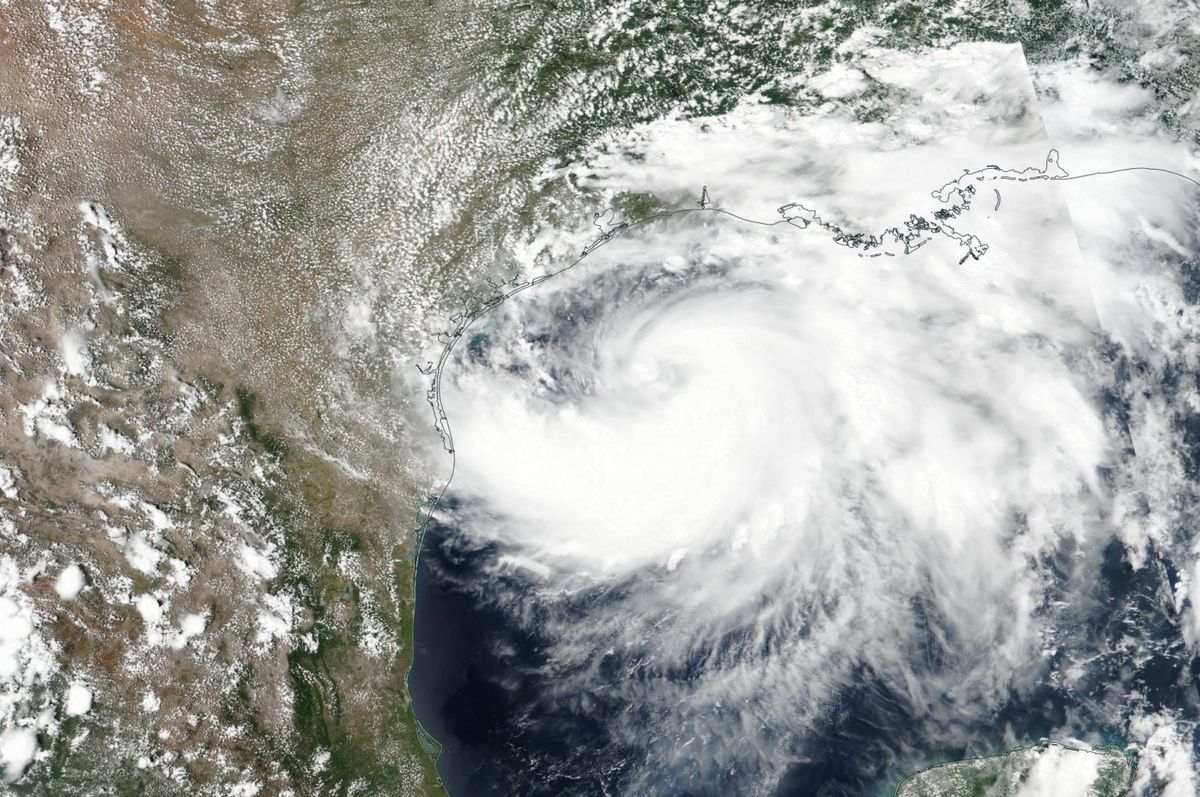Hurricane Hanna weakens to tropical depression after hitting Southern Texas

A few minutes every morning is all you need.
Stay up to date on the world's Headlines and Human Stories. It's fun, it's factual, it's fluff-free.
Hurricane Hanna weakened to a tropical depression by Sunday evening after battering the Gulf Coast of Southern Texas – an area already burdened with the COVID-19 pandemic – with heavy rains and powerful winds on Saturday.
“Any hurricane is an enormous challenge. This challenge is complicated and made even more severe, seeing that it is sweeping through an area that is the most challenged area in the state for COVID-19," Texas Governor Greg Abbott said in a news conference.
In Corpus Christi, a section of a popular pier also collapsed after the storm hit the city on Saturday morning with light rain and heavy winds that rattled windows and threatened to uproot the palm trees in the area.
According to the National Hurricane Center, at around 5 p.m. on Saturday, Hurricane Hanna made landfall on Padre Island, south of Corpus Christi, with winds of 90 m.p.h.
By Saturday evening, high waters caused by the storm hit Corpus Christi’s Art Museum of South Texas.
The hurricane’s outer bands also reached Nueces County in Corpus Christi. In the seven days prior, the county had seen nearly 2000 cases of COVID-19, with 47 deaths.
Governor issues disaster declaration
Abbott issued a disaster declaration for 32 counties in the state. The declaration would allow him to waive any administrative rules or statutes that could impede hurricane response and recovery.
Abbott announced in the news conference on Saturday that the Federal Emergency Management Agency (FEMA) also approved a Federal Emergency Declaration for Emergency Protective Measures, Direct Federal Assistance and Hazard Mitigation statewide.
At a news conference on Friday, Mayor Joe McComb said of Corpus Christi, “We’re riding two horses right now, so be sure to take care of what keeps you safe through the COVID experience.”
On Saturday, the mayor told reporters that people who had invited friends and relatives to their homes for protection during the hurricane should wear a mask.
“Wear the mask in the house. I know that probably sounds kind of crazy, but keeping safe sounds pretty good.”
Abbott also said in the news conference, “This is a time in response to a hurricane where sometimes people will come together, come together to shelter, come together just as close family come together, as friends come together to respond. That coming together will continue to provide the ability for COVID-19 to transmit from one person to another."
Chief W. Nim Kidd of the Texas Division of Emergency Management stated that the Freeman Coliseum in San Antonio, which is usually used for concerts and other events, would be turned into a reception center for those who had escaped from their homes in areas where the hurricane had hit.
With the social distancing protocols posed by the pandemic, officials clarified that the reception center would not be used as a shelter for the evacuees but would rather be used to provide them with vouchers to stay at hotels in the area.
Webb County, which is about 150 miles toward the inland from Corpus Christi, is another area where evacuees usually flee from the coast during disasters. The county has seen more than 5,000 cases of COVID-19. Tano Tijerina, the county executive, said that officials will provide protective gear to the evacuees and take their temperatures.
“We’re going to do whatever we can to help anyone, that’s with COVID or without COVID. We’re taking a risk, but we’re being neighborly and we’re never going to turn people away," said Mr. Tijerina.
Tijerina added that county fairgrounds, schools and community centers could be turned into shelters for evacuees.
As the center of the storm crossed over to Northern Mexico, some southernmost parts of Texas received more than a foot of rainfall.
“We’ll continue to see dramatic waves of flooding including flash flooding that will come upon people suddenly. One moment they will be in an area … where it seems like there’s a little rain and then moments later, they could be washed in water up to their doors, if they’re in their cars, up to their knees, if they’re walking around," Abbott said in the news conference.
By Sunday evening, the storm slowly weakened over the mountains of Northern Mexico. With maximum sustained winds of 35 m.p.h, it was downgraded to a tropical depression.
However, the storm still may still be a threat for Rio Grande Valley, which has already seen a foot of rainfall.
A flash flood emergency issued in Hidalgo County also remained in effect on Sunday as many roads and highways were underwater, needing water rescue.
A risk of tornadoes on Sunday night over parts of the coast also remains.
Brian Field, a National Weather Service office forecaster in Corpus Christi, said, “There could be damage to buildings and structures, especially if there are any tornadoes.”
Have a tip or story? Get in touch with our reporters at tips@themilsource.com




Comments ()